Tick-borne infections in human and animal population worldwide
- PMID: 27047089
- PMCID: PMC4774835
- DOI: 10.14202/vetworld.2015.301-315
Tick-borne infections in human and animal population worldwide
Abstract
The abundance and activity of ectoparasites and its hosts are affected by various abiotic factors, such as climate and other organisms (predators, pathogens and competitors) presenting thus multiples forms of association (obligate to facultative, permanent to intermittent and superficial to subcutaneous) developed during long co-evolving processes. Ticks are ectoparasites widespread globally and its eco epidemiology are closely related to the environmental conditions. They are obligatory hematophagous ectoparasites and responsible as vectors or reservoirs at the transmission of pathogenic fungi, protozoa, viruses, rickettsia and others bacteria during their feeding process on the hosts. Ticks constitute the second vector group that transmit the major number of pathogens to humans and play a role primary for animals in the process of diseases transmission. Many studies on bioecology of ticks, considering the information related to their population dynamics, to the host and the environment, comes possible the application and efficiency of tick control measures in the prevention programs of vector-borne diseases. In this review were considered some taxonomic, morphological, epidemiological and clinical fundamental aspects related to the tick-borne infections that affect human and animal populations.
Keywords: acarology; argasidae; epidemiology; health public; ixodidae; parasitology veterinary; zoonosis.
Figures


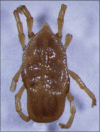


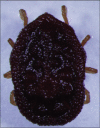
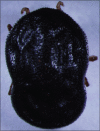


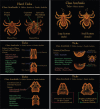

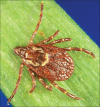




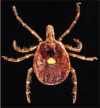

References
-
- Bowman A.S, Nuttall P.A. Ticks: Biology, Disease and Control. New York: Cambridge University Press; 2008.
-
- Barros-Battesti D.M, Arzua M, Bechara G.H. Carrapatos de Importância Médico-Veterinária da Região Neotropical: Um guia ilustrado para identificação de espécies. São Paulo: Vox/ICTTD-3/Butantan; 2006.
-
- Sonenshine D.E, Roe M. Biology of Ticks. 2nd ed. Vol. 1. New York: Oxford University Press; 2014.
-
- Anderson J.F, Magnarelli L.A. Biology of ticks. Infect. Dis. Clin. North. Am. 2008;22:195–215. - PubMed
-
- Nava S, Guglielmone A.A, Mangold A.J. An overview of systematics and evolution of ticks. Front. Biosci. 2009;14:2857–2877. - PubMed
Publication types
LinkOut - more resources
Full Text Sources
Other Literature Sources
